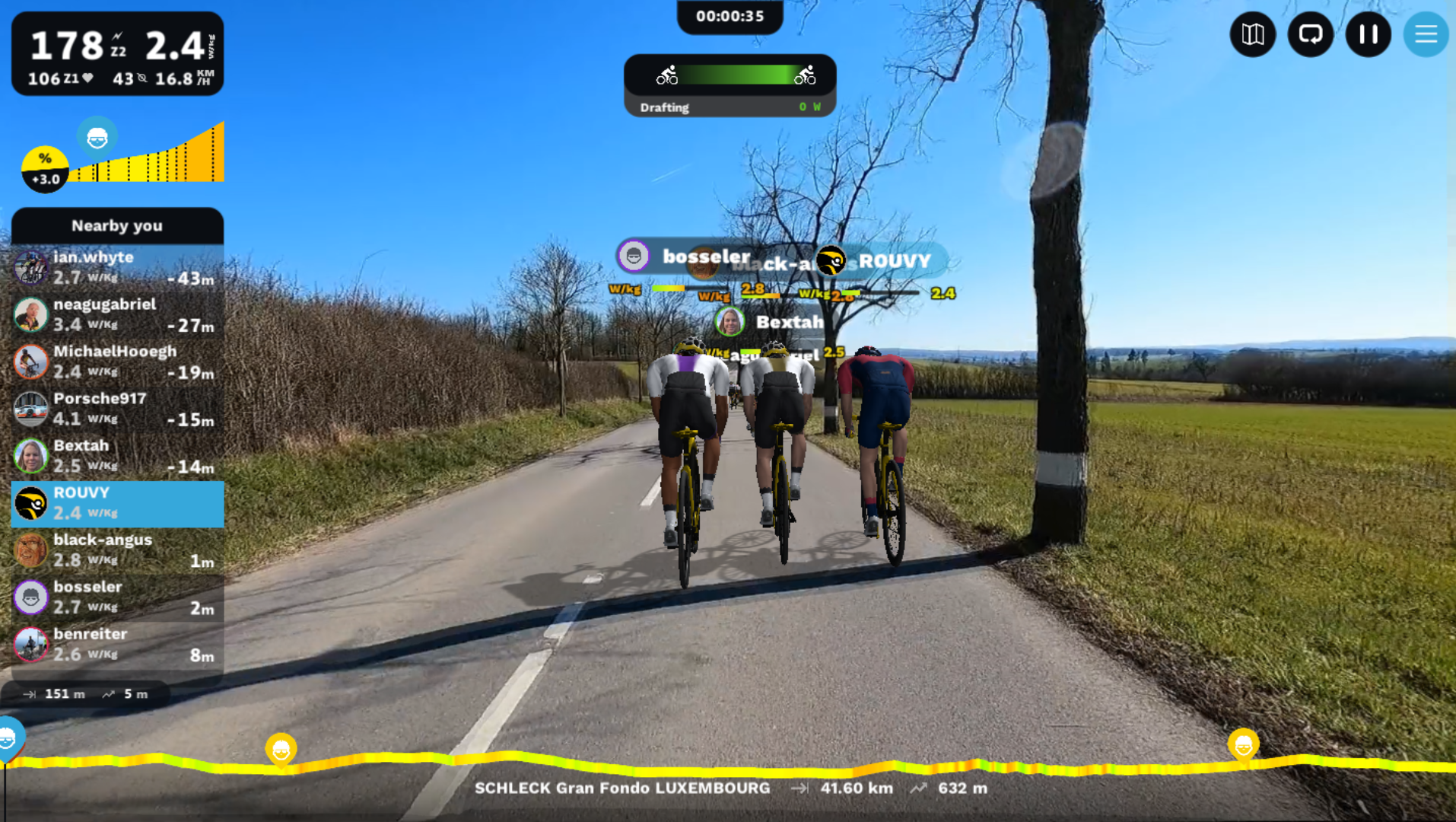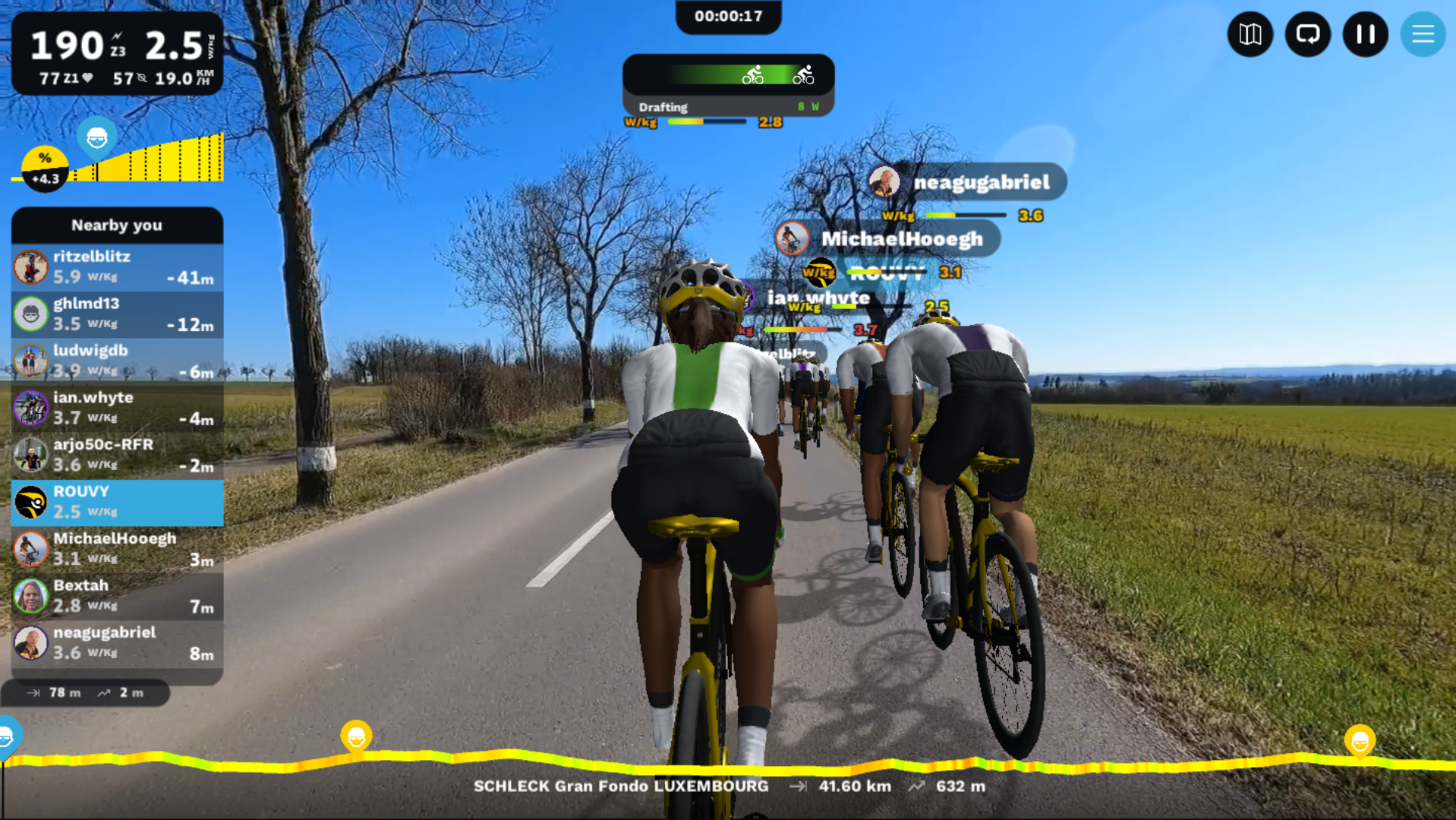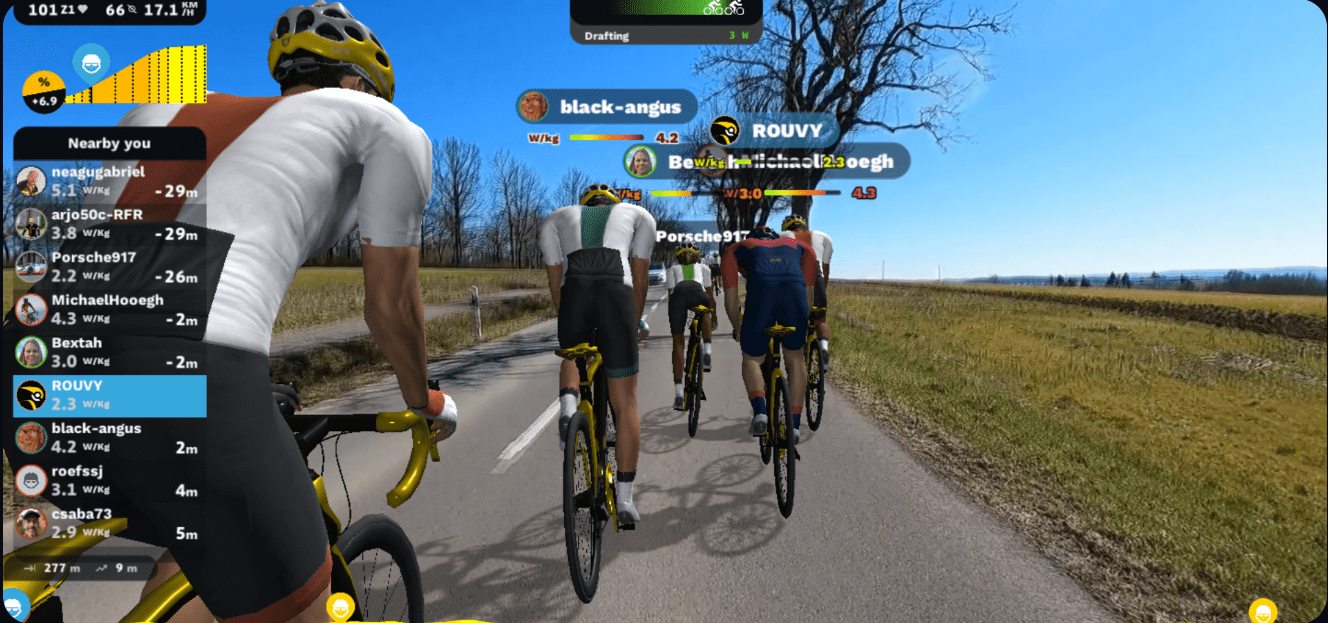Here at ROUVY, we are doing our best to bring the most realistic feeling of cycling on real roads into your training room. With ROUVY AR 1.6.0 version, the virtual rider models receive an update in speed calculation to reflect the difference in weight, height and correlation between them, just as on a real road.
Although we can’t give you the feel of the wind in your hair (your fan can do it well, by the way), we can, with help of some clever physics, make sure that we get as close as possible to the differences we see between riders in real rides and races.

It’s needless but important to say that based on various factors like the basic physical equations, the speed modeling in real life, and of course, simulation of it on ROUVY, it is a bit of both, a scientific and mathematical challenge. Also, the training equipment-in-use affects your indoor road-feel significantly as it has hardware simulation limitations of its own.
Two of the parameters, amidst others that affect how fast you are going on your bike are your WEIGHT and HEIGHT - or together, your frontal area. The frontal area affects the resistance your body has against opposing forces such as air resistance or wind.
While riding, riders with a larger frontal area need to produce more power to achieve the same speed as lighter riders. The difference is most prominent on a flat course or when going downhill. It does make sense, as a smaller rider will have less resistance against the wind or air in general. Note some evidence for the new calculation model tests. If we compare an 80kg (176 lbs) rider to a 60kg rider (132 lbs) over a 90km flat course, when producing constant and same power, the difference in reaching the finish line is 7 minutes.

WRAP-UP
We have made some tweaks to our frontal area physics model which brings your avatar closer to the reality of outdoor conditions, as it takes the size of the rider’s frontal area more into consideration. Therefore, riding and racing on ROUVY will from now on be even more realistic and fair for athletes of different body structures, and basically, for everyone. Who knows, maybe one day, we will even connect the real and historic weather conditions to the route to be able to simulate that wind in the hair with the proper accuracy :).
Please do not forget to update your AR application to version 1.6. to get hold of this and other improvements.
Enjoy your rides!
